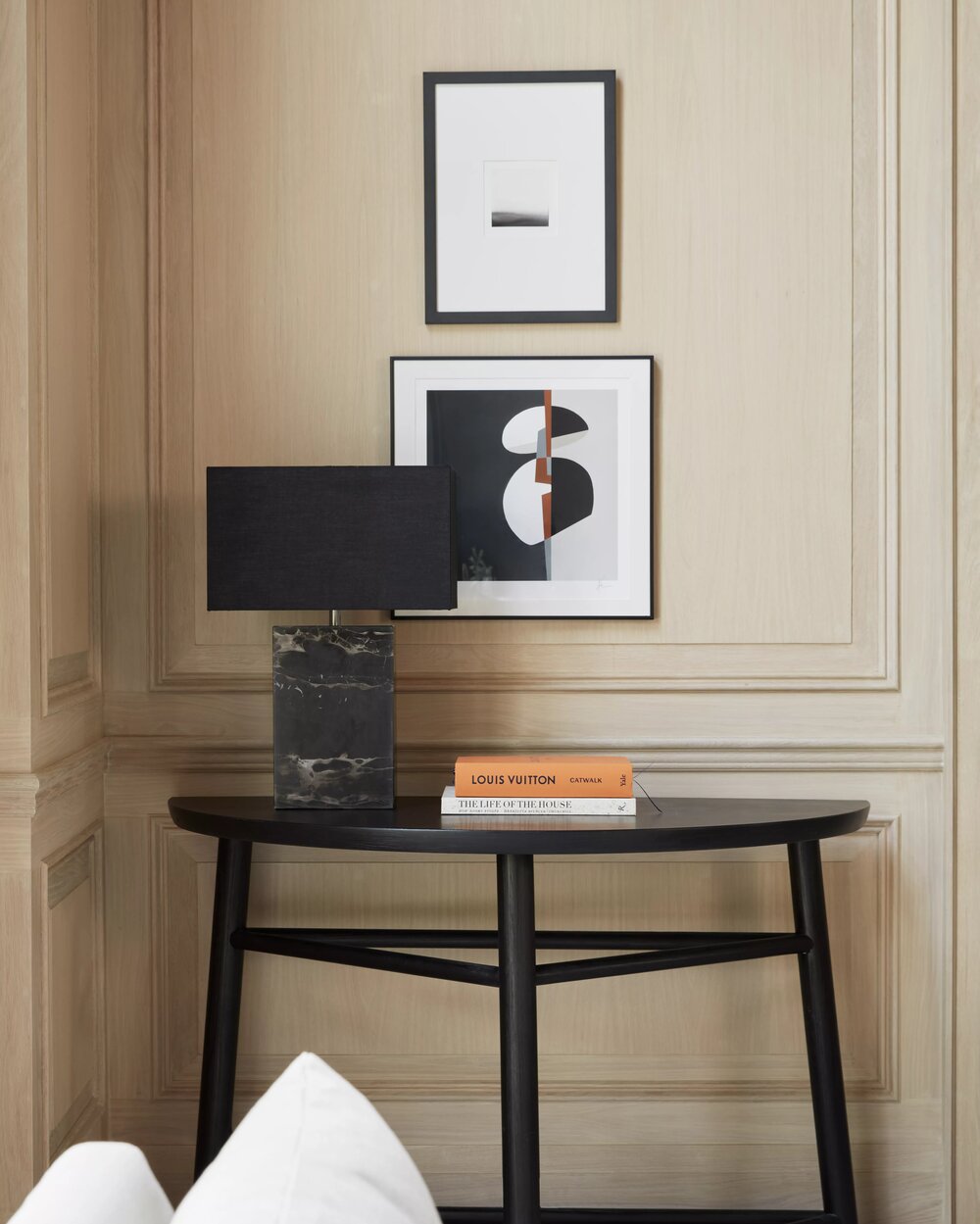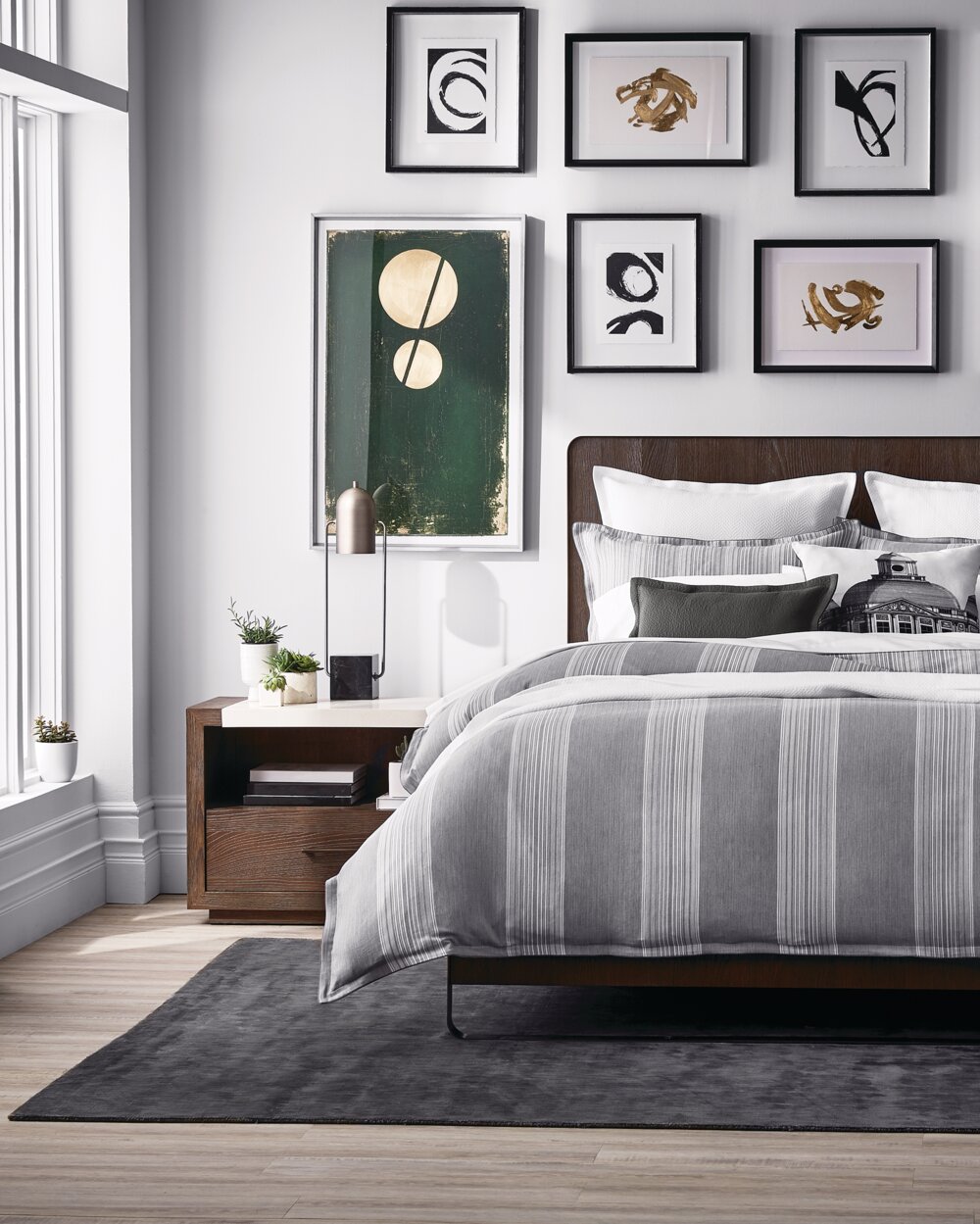
Art has a remarkable way of breathing life into a home. It introduces colour, texture, and personality while reflecting your individual style and passions. But knowing how to display art—and how to shop for it—can feel a bit intimidating at first. The good news is, it doesn’t have to be complicated. With a few thoughtful tips, you can start building a collection that feels right for you and create displays that elevate your entire space.
Go Bold with Scale
One of the most common missteps in how to display art is choosing pieces that are too small for the wall. A large-format piece can anchor a room and create instant impact. Whether it’s a dramatic canvas or a substantial framed photograph, don’t be afraid to go big. Oversized pieces can set the tone in a space and act as a focal point without the need for excessive styling around them.
Create a Gallery Wall
If you have a mix of smaller pieces you love, try putting them together as a gallery wall. This approach gives you the chance to tell a visual story—combining artwork with a similar mood, palette, or theme. Whether you prefer a symmetrical grid or a more organic, free-flowing layout, consistency is key. Matching frames or a unified colour scheme can help keep the arrangement cohesive. And remember, this style of display works beautifully in hallways, living rooms, staircases, or above the bed.

Think About Placement and Proportion
When deciding how to display art, where you place it is just as important as what you choose. Hanging pieces too high can make a room feel disjointed. Try keeping the centre of the artwork at eye level, or about six to eight inches above a sofa or console. This creates a more grounded and connected look. You’ll also want to consider the proportions of both the piece and the wall it lives on, aiming for balance rather than symmetry.
Use Lighting to Highlight Your Art
Once your art is in place, think about how it’s lit. Good lighting can make all the difference. Consider using accent lighting—like picture lights, wall-mounted sconces, or even a directional spotlight—to draw attention to your favourite pieces. In darker corners or rooms with little natural light, a table lamp nearby can enhance the viewing experience while adding warmth. When done well, lighting doesn’t just illuminate your art, it elevates it.
Support Local Artists
Buying art doesn’t have to mean big-name galleries. Look to local artists and makers for unique, meaningful pieces. Visit neighbourhood art fairs, explore artist co-ops, or browse social media to find creators whose work resonates with you. Not only will your collection be more personal, but you’ll also be supporting creative talent in your own community.
Go with Your Gut
At the end of the day, the most important part of buying and displaying art is choosing what you love. Trends will come and go, but when a piece speaks to you, that connection tends to last. Trust your instincts—whether it’s an abstract painting, a vintage print, or a framed textile. When you fill your home with pieces that feel meaningful, how to display art becomes a creative expression rather than a rigid rule.
Act Quickly on Unique Finds
If you come across something one-of-a-kind that really speaks to you, don’t wait too long. Original pieces, especially from emerging or independent artists, may not be available again. Acting quickly can help you build a collection that feels genuine and curated rather than rushed or pieced together over time.
Whether you’re styling a single bold canvas or arranging an eclectic gallery wall, learning how to display art is an exciting part of decorating your home. Start with what you love, trust your eye, and don’t be afraid to experiment—you might be surprised how much a well-placed piece can transform a space.
Photography by Kim Jeffery (1), A Plus Creative (2)